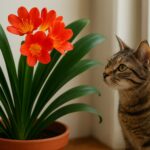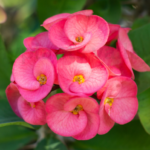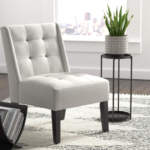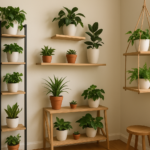Can you use outdoor soil for indoor plants? It’s a common question among plant enthusiasts seeking to simplify their gardening practices. While outdoor soil may seem convenient, its suitability for indoor use depends on various factors. In this article, we’ll delve into the concept of using outdoor soil indoors, exploring its benefits and potential challenges. By understanding the intricacies of soil composition and plant requirements, you can make informed decisions to ensure the health and safety of your indoor greenery.
Let’s unravel the complexities of soil selection for indoor plants and uncover the best practices for safe and successful planting endeavours.
Understanding Outdoor Soil
Understanding outdoor soil is fundamental to determining its suitability for indoor plants. Outdoor soil is a dynamic ecosystem composed of many organic and inorganic materials, including sand, silt, clay, organic matter, and various microorganisms. Its composition varies widely depending on climate, geography, and human activity. Outdoor soil is a plant habitat, providing essential nutrients, water retention, and structural support for root systems. However, it also harbours potential challenges, such as pests, pathogens, and contaminants, which can impact the health of indoor plants. Additionally, outdoor soil may need the ideal drainage properties required for indoor gardening, leading to waterlogging and root rot.
By gaining insight into the complexities of outdoor soil, gardeners can better assess its compatibility with indoor plants. Understanding its composition, characteristics, and potential drawbacks empowers gardeners to make informed decisions when selecting soil for indoor gardening projects. It’s essential to consider these factors carefully to create a nurturing environment that fosters the growth and vitality of indoor plants while minimizing risks to their health and well-being.
Read Also to know more: Does potting soil go bad? From Fresh to Foul
Is there a difference between indoor and outdoor potting soil?

Yes, there are significant differences between indoor and outdoor potting soil. Indoor potting soil is specially formulated to meet the unique needs of plants grown indoors, whereas outdoor potting soil is designed for outdoor gardening.
Indoor potting soil is typically lighter and more porous to promote proper drainage and aeration in the confined space of indoor containers. It often contains peat moss, perlite, and vermiculite to improve soil structure and water retention. Indoor potting soil may also be enriched with nutrients to support healthy plant growth without natural soil.
On the other hand, outdoor potting soil is formulated to withstand the rigours of outdoor conditions, such as fluctuating temperatures, rain, and exposure to sunlight. It may contain more organic matter and be heavier in texture to provide stability and moisture retention in outdoor garden beds.
Using outdoor potting soil indoors may pose risks, such as introducing pests, pathogens, and contaminants into the indoor environment. Additionally, outdoor potting soil may need adequate drainage in indoor containers, leading to waterlogging and root rot.
Challenges of Using Outdoor Soil Indoors
Using outdoor soil indoors presents several challenges that gardeners should consider before using it for indoor plants.
- Pests and Pathogens: Outdoor soil can harbour a variety of pests, such as insects and nematodes, as well as pathogens, like fungi and bacteria. When introduced indoors, these pests and pathogens can wreak havoc on indoor plants, causing diseases and infestations that are difficult to control.
- Contaminants: Outdoor soil may contain contaminants such as heavy metals, pesticides, and urban or agricultural runoff pollutants. These contaminants can accumulate in indoor environments, posing risks to plant and human health.
- Drainage Issues: Outdoor soil is only sometimes optimized for indoor containers, which can lead to drainage problems. Poor drainage can result in waterlogged soil, oxygen deprivation to plant roots, and root rot. Indoor plants require well-draining soil to thrive; outdoor soil may not provide the necessary conditions.
Benefits of Using Outdoor Soil Indoors

Despite the challenges, there are certain benefits to using outdoor soil for indoor plants. Outdoor soil is often rich in nutrients, promoting healthy growth and development in indoor plants. Using outdoor soil indoors can offer several benefits for indoor plants:
- Nutrient Richness: Outdoor soil is often rich in organic matter and essential nutrients, providing a natural source of nourishment for indoor plants. These nutrients, including nitrogen, phosphorus, and potassium, support healthy growth and development.
- Cost-Effectiveness: Utilizing outdoor soil for indoor plants can be cost-effective, especially for larger indoor gardening projects. Instead of purchasing commercial potting mixes, gardeners can use readily available outdoor soil, saving money on soil expenses.
- Environmental Considerations: Reusing outdoor soil indoors reduces the need for synthetic fertilizers and minimizes waste. By utilizing natural resources in the environment, gardeners can adopt more sustainable gardening practices and reduce their ecological footprint.
- Microbial Diversity: Outdoor soil is teeming with diverse microorganisms, including beneficial bacteria and fungi, that play essential roles in soil health and plant growth. Introducing these microorganisms to indoor plants can promote soil biodiversity and improve plant resilience.
- Natural Soil Structure: Outdoor soil provides a natural structure miming the conditions plants encounter in their native environments. This allows indoor plants to develop robust root systems and adapt more effectively to their surroundings.
How to Prepare Outdoor Soil for Indoor Use

Preparing outdoor soil for indoor use involves several essential steps to ensure its suitability and safety for indoor plants:
- Soil Collection: Begin by collecting outdoor soil from a clean and uncontaminated area of your garden or yard. Avoid places that may have been exposed to pesticides, pollutants, or animal waste.
- Soil Testing: Conduct a soil test to assess the outdoor soil’s pH level and nutrient content. This information will help you determine if any amendments are necessary to adjust the soil to the optimal conditions for indoor plants.
- Soil Sterilization: Before bringing outdoor soil indoors, sterilize it to eliminate potential pests, pathogens, and weed seeds. Several methods for sterilizing soil include heating it in an oven or microwave, solarising it using sunlight, or treating it with steam or boiling water.
- pH Adjustment: Test the pH of the outdoor soil and adjust it if necessary to meet the specific requirements of indoor plants. Most indoor plants prefer slightly acidic to neutral soil with a pH range of 6.0 to 7.0. You can adjust the pH by adding amendments such as lime to raise the pH or sulfur to lower it.
- Adding Amendments: Depending on your soil test results, you may need to add amendments to improve the soil structure and fertility. Common amendments include compost, aged manure, perlite, or vermiculite to improve drainage and aeration and organic fertilizers to boost nutrient levels.
- Mixing: Thoroughly mix the outdoor soil with any amendments until they are evenly distributed. This will ensure that your indoor plants receive a balanced and nutrient-rich growing medium.
Alternative Options for Indoor Plant Soil
There are several alternative options for indoor plant soil that offer specific advantages over using outdoor soil indoors:
- Commercial Potting Mixes: Commercial potting mixes are specifically formulated for indoor plants and provide a balanced blend of ingredients such as peat moss, perlite, and vermiculite. These mixes are lightweight, well-draining, and sterile, making them ideal for indoor gardening.
- Soilless Mediums: Soilless mediums, such as coco coir, peat moss, or vermiculite, offer an alternative to traditional soil-based mixes. These mediums provide excellent water retention and aeration, reducing the risk of pests and diseases commonly associated with outdoor soil.
- DIY Soil Blends: DIY enthusiasts can create custom soil blends tailored to the specific needs of their indoor plants. Typical ingredients for DIY soil blends include compost, perlite, sand, and organic fertilizers. By experimenting with different ratios and amendments, gardeners can create a personalized soil mix that meets their plants’ requirements.
- Hydroponic Systems: Hydroponic systems eliminate the need for soil by growing plants in a nutrient-rich water solution. These systems can be particularly beneficial for indoor gardening in limited space or for plants with specific moisture requirements.
- Aquaponics: Aquaponic systems combine hydroponics with aquaculture, utilizing fish waste to fertilize plants grown in a soilless medium. This symbiotic relationship between fish and plants creates a self-sustaining ecosystem that requires minimal maintenance.
Considerations for Specific Plant Types
Considerations for specific plant types are essential when selecting soil for indoor gardening. Different plants have varying requirements based on moisture levels, nutrient needs, and root structure. Here are some considerations for specific plant types:
- Succulents and Cacti: Succulents and cacti thrive in well-draining soil, allowing excess water to drain quickly. A mix of potting soil and perlite or sand works well for these plants, providing adequate drainage and preventing root rot. Avoid soil mixes that retain moisture for extended periods, as this can lead to root rot and other issues.
- Tropical Plants: Tropical plants, such as ferns and orchids, prefer soil that retains moisture while still providing good drainage. A blend of peat moss, perlite, and bark or coconut coir works well for tropical plants, giving moisture retention and aeration for healthy root growth. Adding organic matter like compost can also enhance soil fertility for tropical plants.
- Edible Plants: Edible plants like herbs, vegetables, and fruiting plants have specific nutrient requirements to support vigorous growth and abundant harvests. A nutrient-rich potting mix supplemented with compost or organic fertilizers is ideal for edible plants, ensuring access to essential nutrients throughout the growing season. Additionally, ensuring proper drainage is crucial to prevent waterlogged soil, which can lead to root rot and fungal diseases in edible plants.
- Air Plants: Air plants, such as Tillandsia species, are unique because they do not require soil to grow. Instead, they absorb moisture and nutrients through their leaves from the air. These plants can be mounted on driftwood, rocks, or other decorative elements, allowing them to thrive in a soilless environment. However, occasional misting or soaking in water is necessary to keep air plants hydrated and healthy.
Maintenance Tips for Indoor Plants
Maintaining indoor plants requires regular care to ensure they thrive in their environment. Here are some essential maintenance tips for indoor plants:
- Watering Schedule: Establish a regular watering schedule based on each plant’s specific needs. Some plants prefer moist soil, while others prefer to dry out between waterings. Avoid overwatering, as this can lead to root rot and underwatering, which can cause wilting and stunted growth.
- Monitoring Soil Moisture: Check the soil’s moisture level regularly by inserting your finger into the soil up to the first knuckle. If the soil feels dry, it’s time to water. If it feels moist, wait a few more days before watering again. Adjust your watering frequency based on seasonal changes in temperature and humidity.
- Light Requirements: Place indoor plants in locations that receive the appropriate sunlight for their specific needs. Some plants thrive in bright, indirect light, while others prefer low-light conditions. Rotate plants periodically to ensure all sides receive equal sunlight and promote even growth.
- Temperature and Humidity: Maintain consistent temperature and humidity levels to create a comfortable environment for indoor plants. Avoid placing plants near drafty windows or heating vents, as extreme temperature fluctuations can stress plants. Increase humidity levels by misting plants regularly or using a humidifier, especially during the winter when indoor air is dry.
- Fertilizing: Feed indoor plants with a balanced liquid fertilizer or slow-release granules according to the manufacturer’s instructions. Fertilize plants during the active growing season, typically spring and summer, to promote healthy growth and flowering. Avoid over-fertilizing, as this can cause nutrient imbalances and damage plant roots.
- Pruning and Grooming: Remove dead or yellowing leaves, spent flowers, and leggy growth to maintain the appearance and health of indoor plants. Prune plants regularly to encourage bushier growth and remove diseased or damaged foliage. Grooming also helps improve air circulation around the plant and prevents the spread of pests and diseases.
- Repotting: Monitor the growth of indoor plants and repot them into larger containers as needed to accommodate their expanding root systems. Repotting is typically done every 1-2 years or when plants become root-bound. Use fresh potting soil and ensure the new container has adequate drainage holes to prevent waterlogging.
Conclusion
While outdoor soil can be used for indoor plants under certain circumstances, it’s essential to address potential challenges and take necessary precautions to ensure the health and vitality of indoor plants. By understanding the unique requirements of indoor plants and implementing proper soil management practices, gardeners can create an optimal growing environment for their indoor greenery.
FAQs
Can I use any outdoor soil for indoor plants?
It’s best to assess the quality and composition of outdoor soil before using it indoors. Soil should be free from pests, pathogens, and contaminants, have adequate drainage, and be suitable for indoor use.
How do I know if my outdoor soil is safe for indoor use?
Conducting a soil test and visually inspecting the soil for signs of pests, weeds, and unusual odours can help determine its suitability for indoor use.
Is it necessary to sterilize outdoor soil before using it indoors?
Sterilizing outdoor soil is recommended to eliminate harmful microorganisms and weed seeds that may affect the health of indoor plants.
What are the signs that my indoor plants are not thriving in outdoor soil?
Signs of poor soil quality include wilting, yellowing leaves, stunted growth, and increased susceptibility to pests and diseases.
Are there any specific indoor plants that thrive in outdoor soil?
While some hardy indoor plants may tolerate outdoor soil, most prefer a well-draining potting mix or soilless medium explicitly formulated for indoor use.







